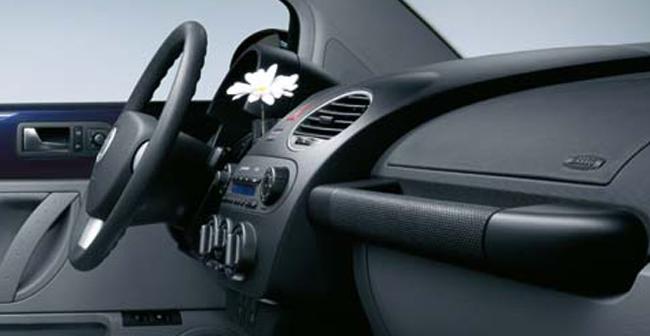
Download Link - http://www.amaderforum.com/showthread.php?t=423623
Please signup for getting access to the links


DE DANA DAN promises laughter and entertainment and sticks to its promise. Nitin is a butler, cook, driver, watchman, gardener to a wealthy female industrialist in Singapore. Like any young man, Nitin too dreams of a better life. He desperately wants to become rich and marry the love of his life, Anjali, who supports him financially. Ram, Nitin's best friend, also came to Singapore with the dream of striking it rich, but ended up a courier delivery man. He falls for Manpreet, but her high society parents will never approve of marriage, not unless Ram has lots and lots of money. In the midst of all this is Harbans, a shrewd businessman, who's looking for ways to multiply his income and avoid his debtors. He decides the best way would be to marry his son off to a girl whose parents can give him a large dowry.
 He is introduced to Manpreet's parents at a function and is impressed by their social status. He introduces himself as a well-established businessman, impresses them and they decide to get Manpreet and Harbans' son married. With several factors working against them, Nitin and Ram soon reach a dead end in their relationships. When both receive ultimatums from their girlfriends, they realize that only a life of vice can help them out of their misery. They come up with an audacious plan to kidnap someone important and demand a ransom. The kidnapping goes awry and both hide at a local hotel while waiting for the ransom money. But misfortune is never far and the kidnapping spirals out of control.
He is introduced to Manpreet's parents at a function and is impressed by their social status. He introduces himself as a well-established businessman, impresses them and they decide to get Manpreet and Harbans' son married. With several factors working against them, Nitin and Ram soon reach a dead end in their relationships. When both receive ultimatums from their girlfriends, they realize that only a life of vice can help them out of their misery. They come up with an audacious plan to kidnap someone important and demand a ransom. The kidnapping goes awry and both hide at a local hotel while waiting for the ransom money. But misfortune is never far and the kidnapping spirals out of control.
Meanwhile, Manpreet's wedding reception is being held at the same hotel that Nitin and Ram are hiding in. Soon, they are joined by a motley set of characters including a Chinese Don [Asrani], a hired assassin [Johny Lever], a ACB police inspector [Sharat Saxena], a club dancer [Neha Dhupia], an ambassador [Vikram Gokhale], a young frustrated double crossing wife [Aditi Govitrikar], a letch [Shakti Kapoor], a drunken waiter [Rajpal Yadav] and a dead body nobody wants to check into the hotel.
 Going by its casting, do not expect "De Dana Dan" to be a sequel, tribute or extension of the "Hera Pheri" series. Forget the threesome chemistry, there is hardly a single frame in the film where the trio of Akshay Kumar, Sunil Shetty and Paresh Rawal share screen space. On the positive side, the movie is fun to watch, and does not deviate from the formula. Each actor, each character, and there are at least 20 characters in the movie, play their part well. Of all actors, Johny Lever, and Asrani are probably the best in their parts. Paresh Rawal has done well too. Akshay is now a regular at this theme, dont expect anything new from him, but he does excellently well in his role.
Going by its casting, do not expect "De Dana Dan" to be a sequel, tribute or extension of the "Hera Pheri" series. Forget the threesome chemistry, there is hardly a single frame in the film where the trio of Akshay Kumar, Sunil Shetty and Paresh Rawal share screen space. On the positive side, the movie is fun to watch, and does not deviate from the formula. Each actor, each character, and there are at least 20 characters in the movie, play their part well. Of all actors, Johny Lever, and Asrani are probably the best in their parts. Paresh Rawal has done well too. Akshay is now a regular at this theme, dont expect anything new from him, but he does excellently well in his role.
Pritam is consistently delivering hit after hit, though his last release All The Best was not up to the mark. Nevertheless, the Bong musician continues to create stirring tunes for music buffs. Here is ‘De Dana Dan’, the album features six originals and six remixes. Rishte Naate in the voice of Rahat Fatah Ali Khan is a must-hear number and this is because of the innocence that runs through the song that is not high on bass and is lucid. Pritam and Rahat know how to mesmerize the listeners. But the mandatory remix version crooned by Kunal Ganjawala fails to lure us like the original. RDB ft Pritam’s Paisa Paisa sounds so much like an Akshay Kumar song. In fact, the little inspiration from Usher’s song ‘Yeah’ makes it no different.
"De Dana Dan" is targeted at the masses and it delivers laughter in abundance. Leave your brains behind to enjoy this Priyadarshan Entertainer!










Volkswagen Touareg Is Coming To India This December
Volkswagen launched its mid-size luxury sport utility vehicle Touareg in 2002. Touareg was the third SUV from the automaker Volkswagen and shares its platform with the Porsche's Cayenne. Now, Volkswagen India is all set to launch Touareg in India this december in a price range of 45-55 lakhs. The Touareg is Volkswagon's radical new sports utility vehicle which represents an attempt to attract a more upscale group of buyers to the Volkswagen brand – buyers who might otherwise be tempted by Mercedes Benz. Accordingly, the company calls the Touareg “one of the most important new vehicle launches in VW history.”
Promotions & Advertisements
Volkswagen India has also started a advertisement which is presently being aired on all leading TV channels in India. In the ad a kid enters Volkswagen showroom and asks: Can we book a car in advance....?? And books a New Beetle for his 18th birthday, a Jetta for his 21st birthday and a Passat when he will become CEO of his dad's company. The ad ends with sneak peek of Touareg SUV with big VW logo & slogan "Das Auto" which means “The Car” in german launguage. In my opinion this is one of the best ads in which they have shown all the models avaialble in India. Great move by Voklkwagen guys to improve the brand image of the company. Waiting for the launch of New Beetle & Touareg in Indian Market.
More About Volkswagen Touareg
Volkwagen Touareg has the New Phaeton’s athletic stance, which is accentuated by big front fender flares and muscular haunches. Combined with exceptionally short front and rear overhang, it looks like it will go anywhere. While new design trails weren't blazed, from most angles, the Touareg offers generic SUV looks with familiar VW markings. However, it’s loaded with engineering features almost unimaginable in a passenger car even a few years ago, including a completely new self-supporting body. The frame is distinct, the supporting framework and the body structure form an inseparable unit. This provides superior static rigidity, which lends not only high speed stability but also severely limits the amount of twisting or flex experienced in extreme off-road situations. Volkswagen Touareg is one of the most popular high end sports utility vehicles that carry 5-star ratings from IIHS (Insurance Institute for Highway Safety) in terms of safety features.
Main Features Of Volkswagen Touareg
- Powerful 3.0 litre TDi diesel engine
- Impeccable interior & comfort features
- Innovative side headlights that light up when the car is in a turn
- Adjustable ride suspension
- Auto sensing rain wipers
- The electronic parking assist system
- Driver and passenger both have powered seats
- 17" alloy wheels with all-season tires
- Silver roof rails
- Premium VI AM/FM stereo with CD player and SIRIUS® Satellite Radio
- 4XMOTION® permanent all-wheel drive system
- Six airbags, driver and passenger front, side, and Side
- Multi-function trip computer with compass and exterior temperature display
- Dual-zone Climatronic® climate control
- Remote power open, power close rear hatch
The interiors of Touareg are as nice as any Audi, Lexus or Mercedes. It looks flawless and the controls are well-positioned and intuitive. Each of the four occupants are pampered with their own climate control and heated seats. The keyless entry system is the best ones available. Just leave the key in your pocket when entering the car and the proximity sensor will recognize it and unlock the car. Start and stop the car with a button in the traditional place where the ignition key is usually placed. To lock the car when you leave, simply press a rubber button on the door handle.
More details, photos, available variants and price of Volkwagen Touareg after the official launch. Watch this space......
 ColorsVolkswagen New Beetle   DashboardVolkswagen New Beetle   ExteriorVolkswagen New Beetle   InteriorVolkswagen New Beetle   Volkswagen New Beetle Is Coming - Launch On 4th December Volkswagen India is going to launch the Beetle in Indian on 4th December, 2009. It is going to compete with the likes of Fiat 500 and it will be imported as a completely built unit in India which will make it pricier due to high import duty. It is expect to be priced around Rs. 20 lakh for the base variant and can go upto 24 lakh for the convertible variant. The company has planned a complete advertising campaign including internet, print, electronic and digital media to generate a furor about its upcoming high cost model. The main aim of launching New Beetle in India is to build a brand image in the country. Along with New Beetle Volkswagen India is also going to launch the much awaited SUV - The Touareg. Promotions & Advertisements Volkswagen India has also started a advertisement which is presently being aired on all leading TV channels in India. In the ad a kid enters Volkswagen showroom and asks: Can we book a car in advance....?? And books a New Beetle for his 18th birthday, a Jetta for his 21st birthday and a Passat when he will become CEO of his dad's company. The ad ends with sneak peek of Touareg SUV with big VW logo & slogan "Das Auto" which means “The Car” in german launguage. In my opinion this is one of the best ads in which they have shown all the models avaialble in India. Great move by Voklkwagen guys to improve the brand image of the company. Waiting for the launch of New Beetle & Touareg in Indian Market. Deisgn & Style Of New Beetle Volkswagen New Beetle is the cute car that started the retro-futurist design craze, which is still going strong. It is a modernized version of the legendary VW Beetle and struck a chord with consumers who had grown tired of standard conservative car designs and had fond memories of the "Bugs" from their youth. On sale in the North American market for more than a decade, the Volkswagen New Beetle hasn't really changed. It is a very smart, stylish, and refined hatchback. Though in India the only rival for New Beetle is Fiat 500. New Beetle combines the German engineering and performance with exceptional fit and finish. With styling straight out of yesteryear and a fun driving experience, the New Beetle is perfect for drivers who like to exert their personality. But its tight cabin limits its appeal. The modern version of the ”Love Bug,” the New Beetle distinguishes itself primarily on its exterior body shape, comfortable road handling, and plenty of standard features common with the entire Volkswagen line. Interiors & Comfort Features In New Beetle It is a front-wheel drive car based off of the MK4 generation Golf/Jetta platform. Four passengers can be seated in this unmistakably classic vehicle. The New Beetle may not seem to have the roomy interior cabin of other competitors, but most passengers will feel relatively comfortable up front and cargo space will handle everyday driving and loads. Feature list is long with 16-inch alloy wheels, remote keyless entry, full power accessories, heated front seats, cruise control, a tilt/telescoping steering wheel and a premium audio system with a CD/MP3 player are added amenities. Engine & Safety Features Of New Beetle Volkswagen New Beetle is powered by a 150 Bhp 2500cc inline-five cylinder engine. It is expected that it will be availabe in a five-speed manual and six-speed automatic with manual gear selection. Safety features includes front and side-impact airbags, anti-lock brakes, tire pressure monitoring system, and daytime running lights. All New Beetle coupes come fully-equipped with antilock disc brakes, stability control, front-seat side-impact airbags and active front head restraints. More details, photos, available variants and price of Volkwagen New Beetle after the official launch. Watch this space...... |
If there was ever an animated film that needed a clever punch-up team, it’s this one. Planet 51 lacks both style and substance, which is surprising given the wealth of opportunities you’d think would be presented here. Perhaps first-time Spanish director Jorge Blanco and new Madrid-based studio Ilion Animation were overconfident about making a children’s film.
 Sony's entry in the crowded animation field this holiday season is "Planet 51," a perky though not terribly imaginative feature aimed primarily at youngsters. The twist in this movie is that it has an alien planet terrified of - a human astronaut.
Sony's entry in the crowded animation field this holiday season is "Planet 51," a perky though not terribly imaginative feature aimed primarily at youngsters. The twist in this movie is that it has an alien planet terrified of - a human astronaut. Planet 51 devotes itself to tiresomely repetitive scenes of frenzied jeopardy, accompanied by music that shifts gears every 15 seconds to underline whatever response is desired and larded with refs to famous antecedents (The Day the Earth Stood Still, 2001, Star Wars, E.T., Alien, et al.) and an innocuous putative romance between Lem and neighbor Neera.
Planet 51 devotes itself to tiresomely repetitive scenes of frenzied jeopardy, accompanied by music that shifts gears every 15 seconds to underline whatever response is desired and larded with refs to famous antecedents (The Day the Earth Stood Still, 2001, Star Wars, E.T., Alien, et al.) and an innocuous putative romance between Lem and neighbor Neera. "Planet 51" is Sci-Fi Lite, running through the cliches - let's make that the memories -- of old sci-fi classics with gentle jokes and cornball battles. It doesn't measure up to what's best in current animation -- say, Coraline, Up, Fantastic Mr. Fox or A Town Called Panic, to name a few other films the Academy recently announced as eligible for this year's animation nomination. Those films demonstrate you can make animation that entertains the entire family.
"Planet 51" is Sci-Fi Lite, running through the cliches - let's make that the memories -- of old sci-fi classics with gentle jokes and cornball battles. It doesn't measure up to what's best in current animation -- say, Coraline, Up, Fantastic Mr. Fox or A Town Called Panic, to name a few other films the Academy recently announced as eligible for this year's animation nomination. Those films demonstrate you can make animation that entertains the entire family.  Red Cliff is the most expensive Chinese movie made to date, a two-part film depicting the famous battle at Red Cliff, when the Han Dynasty general from North China, Cao Cao, sails a massive fleet down the Yangtze River to invade the lands of Liu Bei and Sun Quan in the South.
Red Cliff is the most expensive Chinese movie made to date, a two-part film depicting the famous battle at Red Cliff, when the Han Dynasty general from North China, Cao Cao, sails a massive fleet down the Yangtze River to invade the lands of Liu Bei and Sun Quan in the South. The heart of the film is the relationship between master strategist Zhou Yu and scientific sage Zhuge Liang. Perfectly cast as man of action and crafty savant, Leung and Kaneshiro build a rich spirit of warmth and respect around these two very different men.
The heart of the film is the relationship between master strategist Zhou Yu and scientific sage Zhuge Liang. Perfectly cast as man of action and crafty savant, Leung and Kaneshiro build a rich spirit of warmth and respect around these two very different men.





